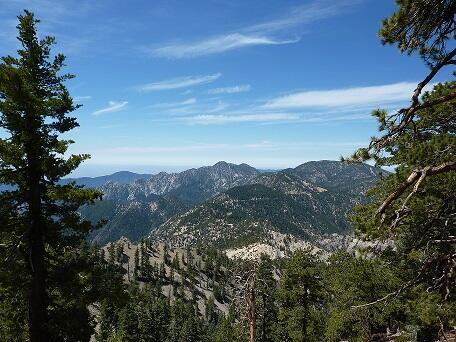After the long campaign to protect the region, this Friday's designation of the San Gabriel Mountains as a National Monument is a victory for Latinos to celebrate. The monument's designation represents a significant moment in which we can see how effectively our community can engage in protecting public lands -- as well as the ways we enjoy them.
The numbers clearly show that the Latino community supports this designation. Reflecting outcomes of other recent polls addressing Latino attitudes towards environmental conservation and land preservation, a recent poll of Los Angeles voters revealed that an overwhelming majority (88 percent) of Latinos supported protecting the San Gabriel Mountains and rivers. In addition to a wide coalition of conservationists, a number of Latino organizations backed the effort to protect the San Gabriels, including, to name just a few, California LULAC, Mujeres de la Tierra, Latino Coalition for a Healthy California and the faith-based alliance Por la Creación.
The San Gabriel Mountains National Monument is the third of three large areas of public land that has been granted National Monument status by the Obama administration in the last two years, thanks in large part to support from Latino communities that surround them. The other two are Rio Grande del Norte National Monument and Organ Mountains-Desert Peaks National Monument, both in New Mexico. This trend of course raises the question: why is protecting these places so important to Latinos?
Latinos in the Southwest have witnessed extractive industries such as oil, gas and mineral development, as well as urban growth, mar the landscapes, pollute watersheds and affect the wildlife that have sustained us for generations. These lands are part of our heritage and are as treasured to us as are the Grand Tetons in Wyoming or the Florida Everglades.
Yet Latinos, especially Latino hunters and anglers, would argue that protecting the land by setting it aside and cutting off our recreational and traditional uses would be unsatisfactory to the community. We support these new monuments largely because they not only protect the land and waterways, but also respect continued access for hunting, fishing, camping and hiking -- activities that our communities throughout the Southwest have pursued for generations.
The San Gabriel Mountains in particular have always been a welcome reprieve from the city for Latinos, especially for hunting and fishing, and have been increasingly valuable as a destination for outdoor education programs, with private organizations and public agencies using the area to connect many Latino urban youth to the outdoors. Moreover, the San Gabriel Mountains watershed provides a significant portion of the region's clean water supply; protecting the health of the resource is paramount to the health of communities downstream.
There are many good reasons to celebrate the new national monument. But it is important to note that the San Gabriel Mountains, along with the Rio Grande del Norte, and the Organ Mountains-Desert Peaks National Monuments represent a new approach by protecting the land we love and respecting how we have enjoyed the land for generations. It's encouraging to know that we can continue to enjoy these places for generations to come. It's also satisfying to know that Latinos have played a significant role in protecting them.
